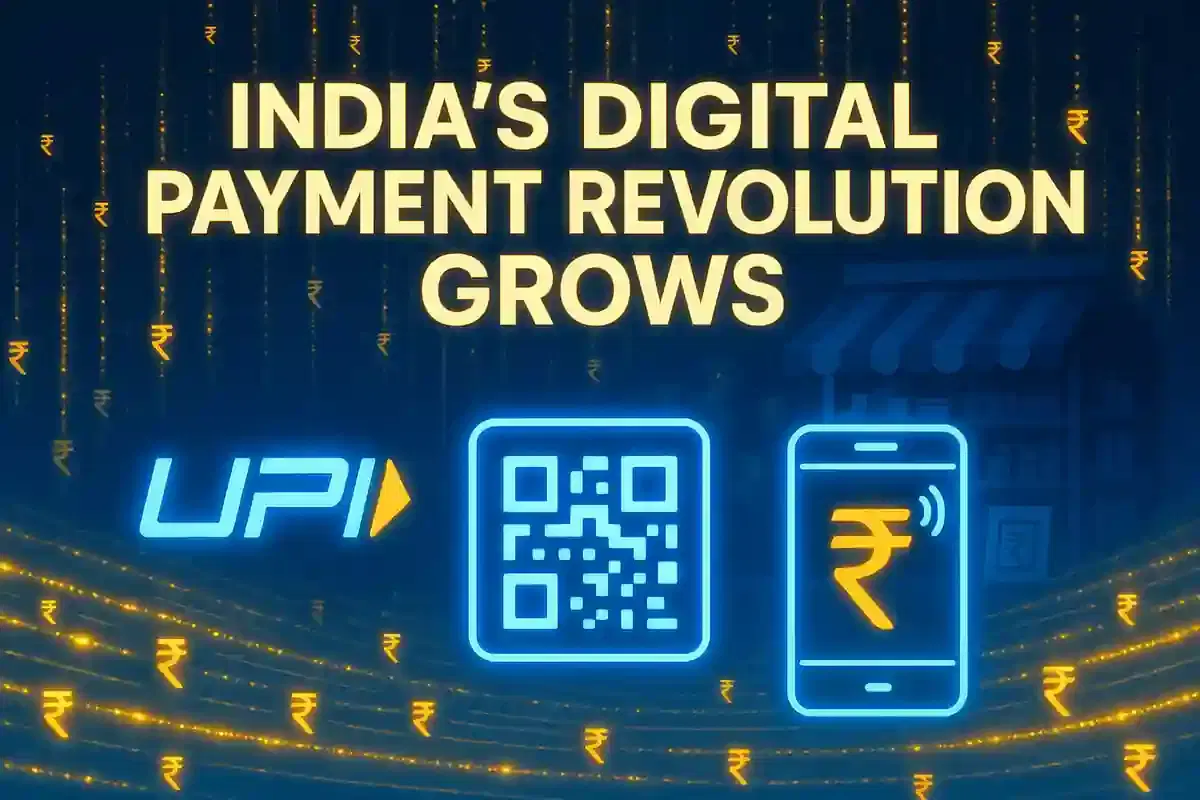India's Digital Payments Surge: UPI Volume Hits 106 Billion, Merchant Adoption Skyrockets in H1 2025
Tech
|
29th October 2025, 8:03 AM

▶
Short Description :
Detailed Coverage :
India's digital payment landscape experienced robust expansion in the first half of 2025, according to the India Digital Payments Report (1H 2025) by Worldline. Unified Payments Interface (UPI) transactions surged by 35% year-on-year, reaching 106.36 billion in volume and ₹143.34 trillion in value between January and June 2025. The average transaction value decreased to ₹1,348 from ₹1,478, indicating a higher frequency of smaller purchases.
A key driver of this growth was person-to-merchant (P2M) UPI transactions, which rose by 37% to 67.01 billion. This surge is attributed to the increasing digital adoption by small retailers and local Kirana stores, a phenomenon Worldline termed the "Kirana Effect." India's UPI QR network more than doubled to 678 million, a 111% increase since January 2024, solidifying India as the world's largest merchant acceptance ecosystem.
Credit card spending also grew, with outstanding cards up 23% and monthly spends crossing ₹2.2 trillion, though average transaction size saw a 6% dip. Conversely, debit card usage at Point-of-Sale (PoS) terminals declined by 8% as lower-value payments shifted to UPI. Other digital payment methods also showed strength: FASTag transactions grew 16% to 2.32 billion, and Bharat BillPay transactions surged 76% in volume and 220% in value, reaching ₹6.9 trillion. Mobile payments continued to dominate, with 98.9 billion transactions worth ₹209.7 trillion.
The report anticipates the next growth phase to be driven by innovations like biometric and PIN-less UPI, chat-based payments, and the global expansion of UPI corridors. Emerging solutions such as SoftPoS and credit-on-UPI are expected to further enhance digital acceptance and financial inclusion.
Impact This sustained growth in digital payments signifies a maturing digital economy, benefiting companies involved in payment processing, fintech services, and e-commerce infrastructure. It indicates strong consumer adoption and merchant readiness, paving the way for further innovation and potentially higher transaction volumes across various sectors. Rating: 8/10
Difficult Terms: Unified Payments Interface (UPI): A real-time payment system developed by the National Payments Corporation of India (NPCI) that allows instant money transfers between bank accounts on mobile platforms. Person-to-merchant (P2M): Refers to financial transactions made by an individual consumer directly to a business or merchant. Kirana stores: Small, neighborhood retail shops typically found in India that sell everyday household items. QR network: A system utilizing Quick Response (QR) codes, which are two-dimensional barcodes, to facilitate payments by allowing users to scan them with their mobile devices. Point-of-sale (PoS) terminals: Electronic devices used at retail locations to process card payments, digital payments, or other forms of financial transactions. Bharat QR: A standardized, interoperable QR code system developed in India for digital payments, enabling consumers to pay merchants by scanning a single QR code. FASTag: An electronic tag attached to a vehicle's windshield that enables automatic toll payments on national highways using Radio Frequency Identification (RFID) technology. Bharat BillPay (Bharat Connect): A unified payment system in India that allows consumers to pay all their recurring bills (like electricity, gas, telecom) through a single platform, developed by NPCI. Mobile-first payment economy: An economic environment where mobile devices are the primary tool used by individuals and businesses for making and receiving payments and conducting financial transactions. Biometric UPI: An upcoming feature for UPI that allows users to authenticate transactions using unique biological characteristics like fingerprints or facial scans instead of a PIN. PIN-less UPI: A proposed enhancement to UPI that would enable certain transactions to be completed without requiring the user to enter their Personal Identification Number (PIN). Credit-on-UPI: A feature that allows users to link their credit cards or credit lines to the UPI platform, enabling them to make UPI payments using borrowed funds. SoftPoS: Software-based Point of Sale solutions that transform ordinary smartphones or tablets into payment acceptance devices, enabling them to process contactless transactions without dedicated hardware terminals. Financial inclusion: The process of ensuring that individuals and businesses have access to and can effectively use appropriate, affordable, and timely financial products and services like banking, credit, insurance, and payments.